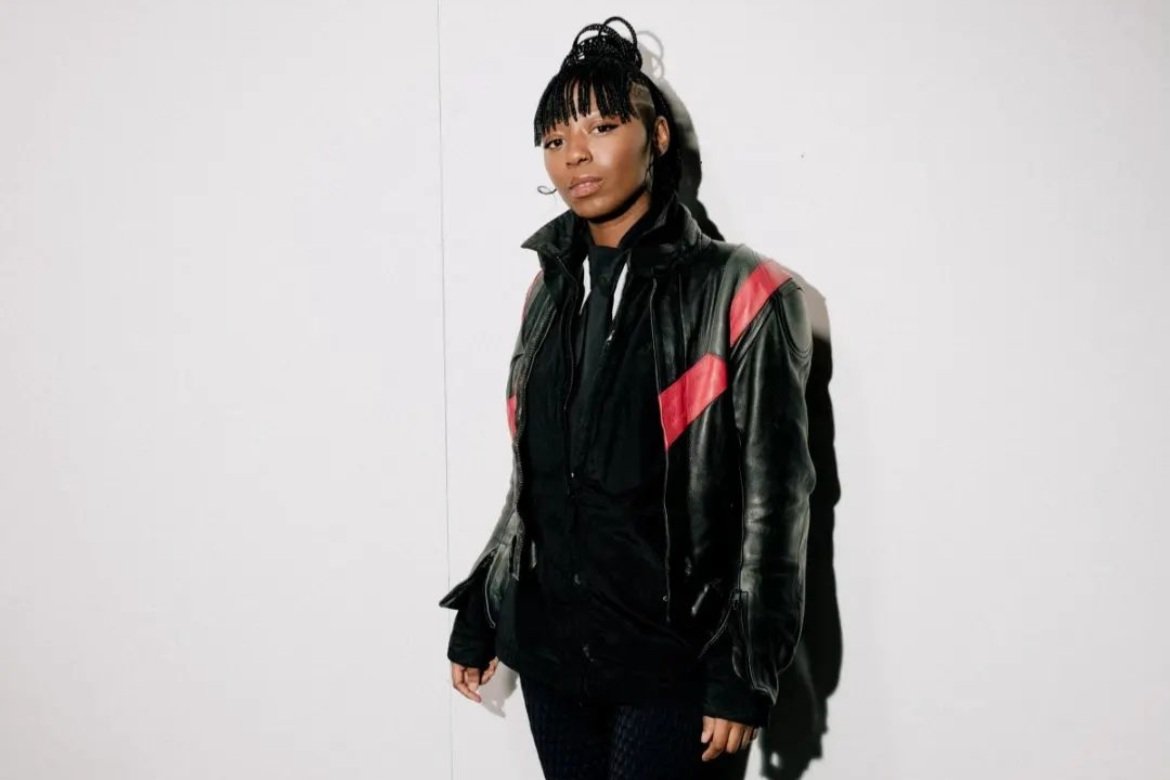
Sensuous superstar
FÉLICITÉ-
There is such a thing as black magic. A tender spiritual line that is not shyly accepted but understood as a part of being human. The magic is omnipresent, in the process and in the stories. But how is it to capture the metaphysical through a westernised canon? It is dancing, straddling a fine line; if you break the straight gaze to look up or turn your head, you'll see it, hear it, strung to its own song.
There was a flood of magic on the night, pouring in from the screen: from each contributing artist, the conversation with Juliana Kasumu and the audience. At REDEYE, we want to break out of the expectations and traditions of popular film. The point is to show different ways and processes of telling. It means being comfortable with questioning as we seek to conform this tool to the tongue and tendencies of non-Western people, their folklore and spiritual paradigm. Serenaded into surreal escapades - film review by Sarah
Feeling the fear but not residing there
It’s often said that the best way to conquer life and regain control is to steer into fear. At least, that’s exactly what Susan Jeffers says in ‘Feel the fear and do it anyway’. Without the tingle of fear, we are not changing, growing and living. In Alain Gomis’ award-winning film, our protagonist, Félicité (Véro Tshanda Beya Mputu), is internally vibrating. She’s the lead singer and heart of a busy bar that can only be described as Kinshasa's answer to Eastenders. She’s just left a stifling relationship, signing on the dotted line of single motherhood. Yet, the energy and life of the bar continues to bubble, even when it spills, the splash confirms the excitement.
The slight smirk as she sings tells us Félicité is comfortable in this atmosphere. But a sudden push turns our sensual superstar into a stoic embolism of unwavering drive. Her son, Sammo (Gaeton Claudia), gets into a potentially life-altering ‘motorcycle accident’. Although we later have reason to question this - it may be a coverup of an attack at the supermarket after being caught stealing. Sammo’s leg is now in critical condition, but the doctor won’t operate until he sees some stacks. This pivotal point kicks Félicité into survival mode. Steering into fear, she meanders into every cranny in the city trying to raise the funds for her son.The Impala in the dark
Speckled throughout the film, we’re serenaded into surreal escapades of Félicité’s wandering through a dark forest. It reflects on the internal liberties of Félicité’s mind, in stark contradiction to the noisy city. There she finds what may have been a springbok, or a great Kudu, or an Impala. Either way, this creature also wanders between the trees.
Its bizarre interruptions feel similar to Tabu’s intrusion into Félicité and Sammo’s life after the incident. For the most part, Tabu (Papi Mpaka) is a bumbling, self-identified goat. He’s a shameless drunk, flirting with all the pretty ladies, and in true Peggy Mitchell style, is constantly heckled out by the owners. As a mechanic, he’s a complete spanner. But, through his brazen charm, he provides light relief for both of them. He comforts, he tells stories, he makes them laugh, and he heals.
Winner of the 2017 Africa Movie Academy Award for Best Film, Félicité is a cheek-clenching story which unpacks motherhood, masculinity, unconventional family and pushing through fear.Deep digging conversations with Juliana Kasumu
Juliana Kasumu’s work centres black women, an underrepresented group, whilst exploring themes of legacy and reclamation of the archival narrative. Characterised by fragmented non-linear narratives, Juliana uses memory as a catalyst to reflect on neocolonialism, language, belonging and identity formation regarding transculturalism. As a multidisciplinary artist, she is explorative, including photo, video and sculptural installation. She explores sites of gathering, spaces that provide a sense of security and familiarity, like Black hair salons and Black churches. In FÉLICITÉ, people gather for pleasure, grief and to pray, but there is a persistent sense of belonging and support. Juliana’s familiarity with the theme and her experience as a maker shared light with our audience.Artwork response - Sola Olulode
Sola’s artwork for FÈLICITÈ is a breath of beautifully subdued colour palette. True to her practice and influence from Yoruba Adire textiles, the image is textured by the print process. Sola’s hand has a childlike quality that gives life to the image. The layers of paint give movement to Fèlicitè’s figure. Through her works, Sola is celebrating the multiplicity of Womxnhood and identity, taking the onus of bringing representation and visibility to her marginalised communities.
Sola Olulode is British-Nigerian and London based. Sola develops textural canvases with various mediums of natural dyeing, batik, wax, ink, pastel, oil bar, and impasto. She explores the fluidities of self-identity, centring her lived experiences and that of friends and emphasising the persistent need for representation. Sola reinterprets images of majoritively Black Womxn expressed through diverse reflections of feminine energies. Her figures are multifaceted, complex individuals; their energy relishing boundlessly in the temporality of self-validation and joy.Playlist curation - Covco -
Sound design artist Covco has a moving multidisciplinary practice that comprises sculpture, installation, and sound, exploring storied narratives with ancient textural soundscapes. As in Alain Gomis’ FÉLICITÉ Covco’s works are interested in touching on the inner and outer spaces of her audience. Covco’s style implies that the work is as much about the process as the outcome, all with the consistent aim of finding the channel that will transcend the maker and listener. Covco is an explorative creator, willing to challenge and be uncomfortable; each body of work can be an evolutionary opportunity. The resulting growth and freedom are visible and audible in the new spaces and ways Covco finds to play.Writers: Sarah Hawke & Fikayo Oloruntoba





